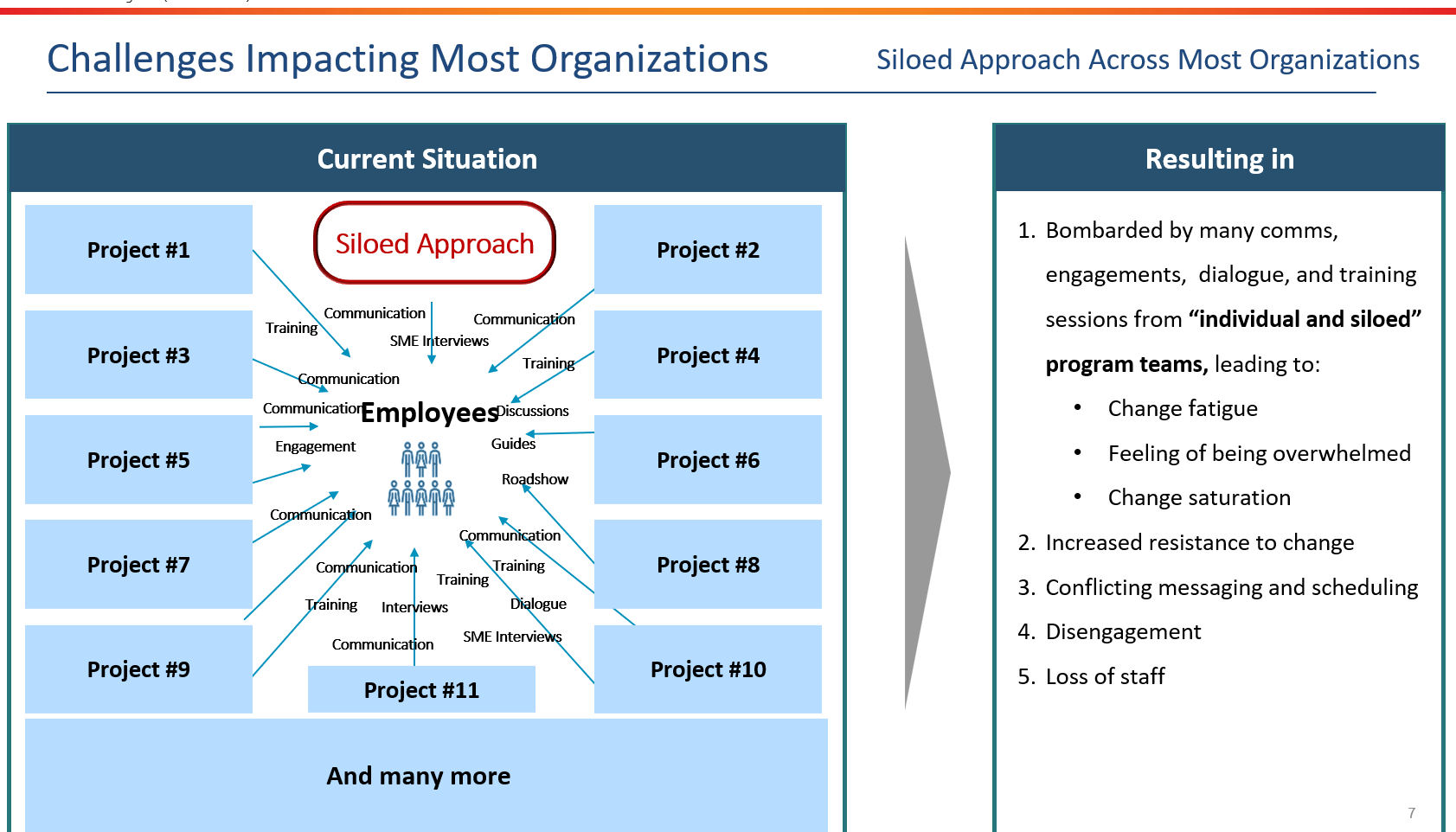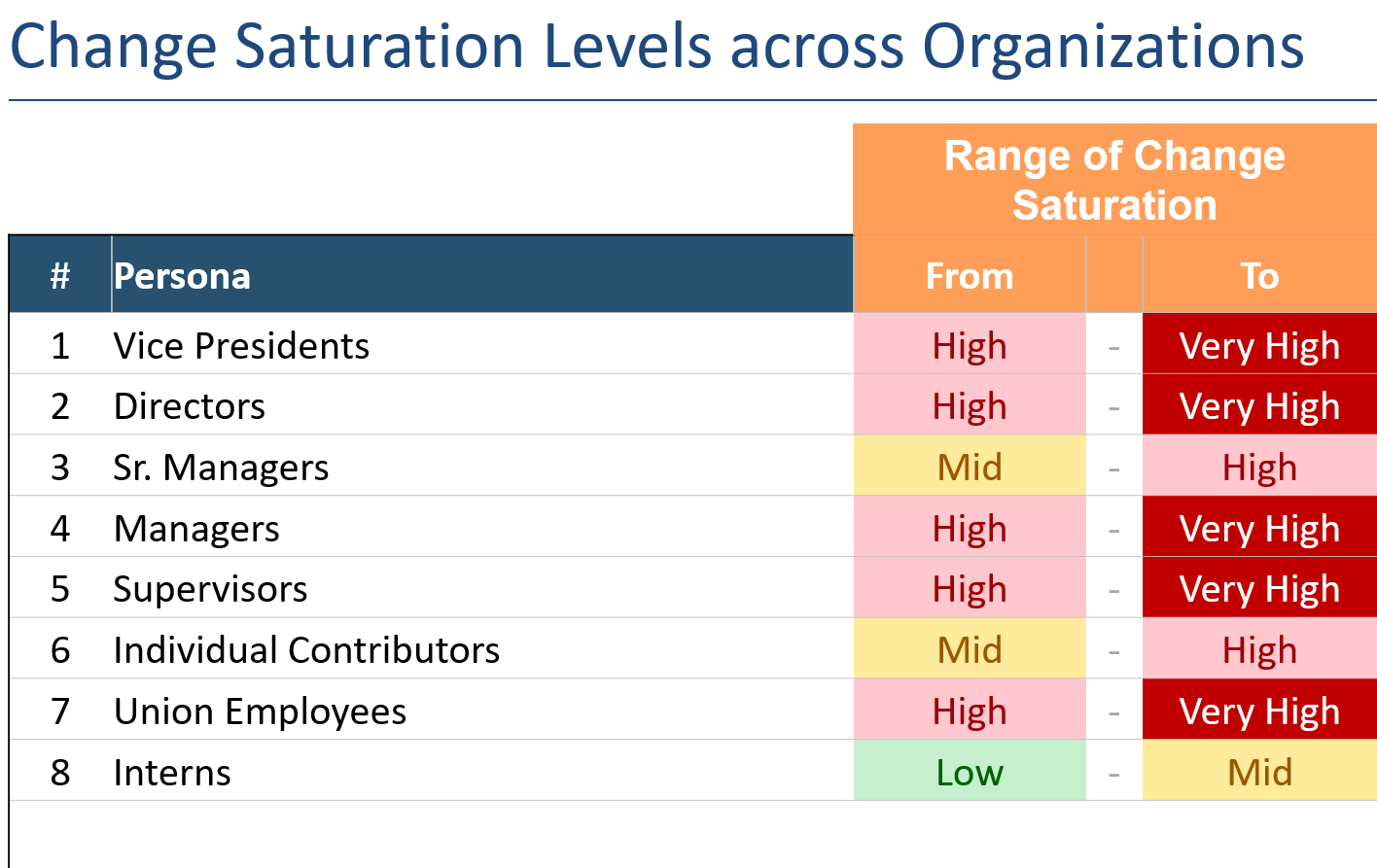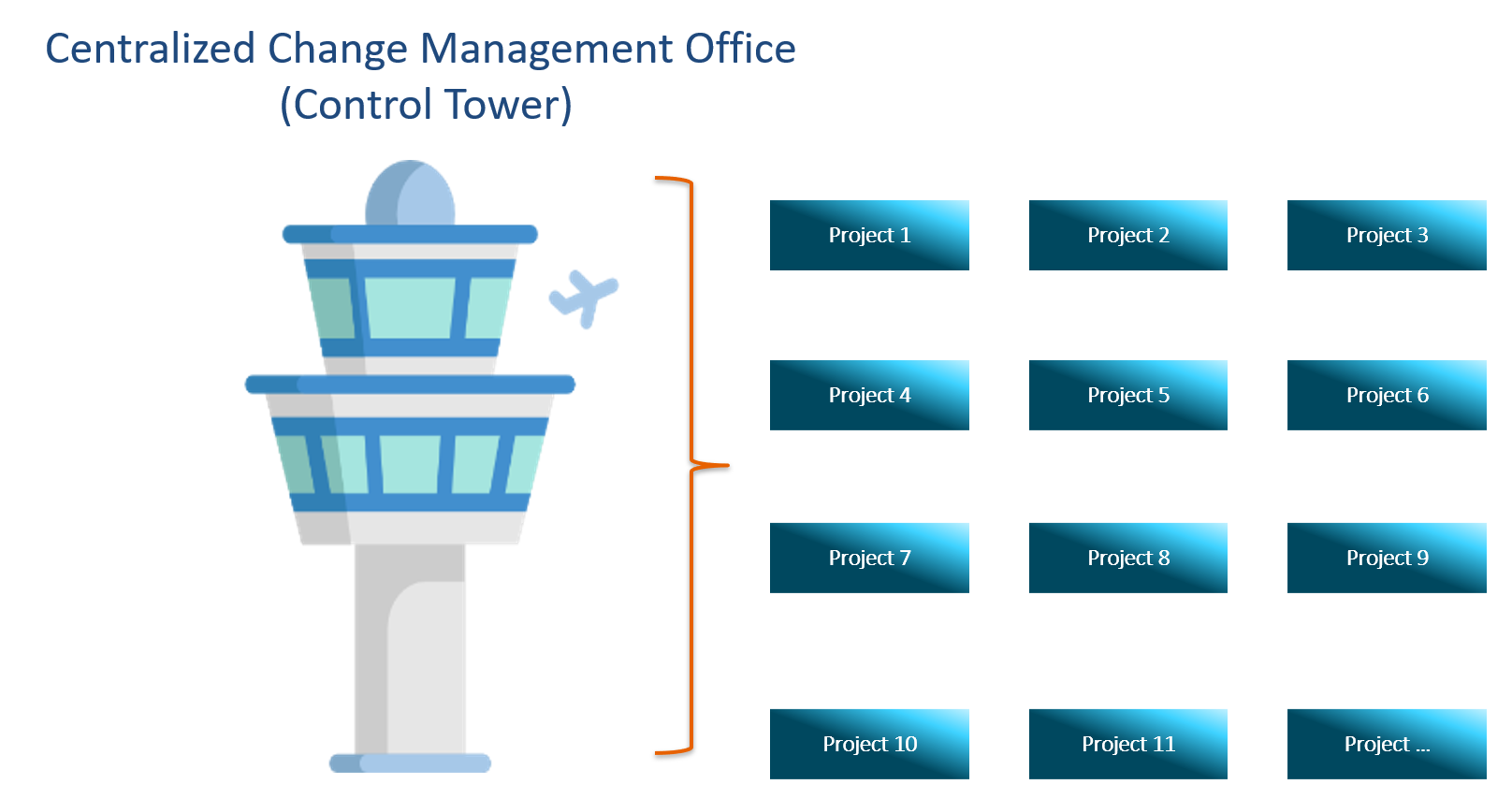Change Management Control Tower – How to Coordinate Multiple Projects Using an OCM Tower
Many organizations today are running multiple projects in parallel. While this level of transformation is often necessary for growth, efficiency, and competitiveness, it also introduces a hidden challenge: siloed approaches to employee engagement and change management.
In most cases, project teams and their Organizational Change Management (OCM) resources are working independently, often targeting the same impacted departments, groups, or teams. The result? Employees are bombarded with communications, training, interviews, and engagement requests from multiple directions, all at once.
Let’s get started
Watch this overview video or read the guide below.
The Problem with Siloed Projects
Imagine five different OCM or project teams each rolling out their initiatives to the same group of employees. Each team sends out:
- Its own set of communications
- Invitations to training sessions
- Requests for SME interviews
- Engagement activities and workshops
From the employees’ perspective, it doesn’t matter that these requests are tied to different projects, they see an endless stream of messages and activities landing in their inbox and calendars.
This “siloed approach” creates several problems:
- Change fatigue – Employees become exhausted by the sheer volume of initiatives.
- Overwhelm and saturation – Too many touchpoints lead to confusion and frustration.
- Resistance to change – Instead of embracing transformation, staff may push back or disengage.
- Conflicting messaging and scheduling – Misalignment between projects creates confusion.
- Staff attrition – In extreme cases, employees may leave due to constant disruption.

Change Saturation Across the Organization
Research and experience show that change saturation is not evenly distributed. Executives, directors, and managers often face high to very high levels of change saturation, while interns and junior contributors typically face less. The more senior the role, the higher the number of projects they are expected to influence, lead, or support, leading to greater risk of burnout.
Without coordinated oversight, organizations unintentionally overload their most critical talent.

The Change Management Control Tower Solution
The recommended solution is the creation of a Centralized Change Management Office (OCM PMO or “Control Tower”).
A Control Tower acts as the coordination hub for all OCM activities across projects. Much like an airport control tower ensures planes don’t all land on the same runway at the same time, the OCM Control Tower ensures projects don’t overwhelm employees with competing and overlapping demands.
Key Benefits of a Change Management Control Tower
- Holistic coordination – Aligns all project OCM activities to a single calendar and governance model.
- Consolidated communications – Instead of five project teams sending five separate emails, the Control Tower can consolidate into one or two coordinated messages.
- Consistency in messaging – Ensures that employees hear a unified story about organizational priorities and outcomes.
- Reduced change saturation – Employees receive fewer, better-timed interactions, helping them absorb and adopt changes more effectively.
- Improved collaboration and synergy – Project teams share insights, leverage each other’s work, and avoid duplication of effort.

Change Management Command Center Example in Practice
Instead of five OCM teams individually communicating with a finance department in the same week, the Control Tower could align those messages into:
- One consolidated email with a unified message, showing employees how different initiatives connect.
- One training roadmap that integrates key sessions, avoiding scheduling conflicts.
- One engagement session where updates from multiple projects are shared together.
This approach not only reduces employee overwhelm but also increases trust in leadership by showing that the organization is managing change in a thoughtful, coordinated way.
Free Downloadable Checklist
To help you establish a Control Tower in your department or organization, we’ve created a practical step-by-step checklist. This guide covers preparation, stakeholder engagement, governance, tools, pilots, and continuous improvement.
👉 Download the free Control Tower Checklist here
Final Thoughts
Running multiple projects in parallel is inevitable in modern organizations, but running them in silos is not. By implementing an OCM PMO or Control Tower, companies can transform chaotic, overwhelming change into a coordinated and strategic journey.
The Change Management Control Tower model ensures that employees remain engaged, informed, and ready to embrace transformation, without being buried under an avalanche of change.
Note: Content on OCM Solution's ocmsolution.com website is protected by copyright. Should you have any questions or comments regarding this OCM Solutions page, please reach out to Ogbe Airiodion (Change Management Lead) or the OCM Solutions Team today.
FAQs
What are siloed projects in organizations?
Siloed projects occur when individual project or OCM teams work independently, often without coordination, leading to multiple communications, trainings, and activities targeting the same employees. This lack of alignment results in confusion, change fatigue, and resistance to change.
Why is a siloed approach to change management a problem?
A siloed approach overwhelms employees with conflicting communications, duplicate training sessions, and overlapping engagement activities. This creates change saturation, lowers productivity, and increases the risk of disengagement or staff turnover.
What is an OCM Control Tower or Change Management PMO?
An OCM Control Tower, sometimes called a Change Management PMO, is a centralized office that coordinates all change management activities across multiple projects. It ensures consistency in messaging, consolidates communications, and helps employees manage organizational change more effectively.
ow does a Control Tower reduce change saturation?
A Control Tower reduces change saturation by consolidating communications and training from multiple projects into fewer, more streamlined messages. Instead of five separate emails from five project teams, employees might receive one or two well-coordinated communications, making changes easier to absorb.
What are the benefits of implementing a Change Management Control Tower?
The main benefits include: Holistic coordination across all projects, reduced employee overwhelm and fatigue, clear, consistent messaging, optimized scheduling of training and engagement activities, greater collaboration and efficiency between project teams
